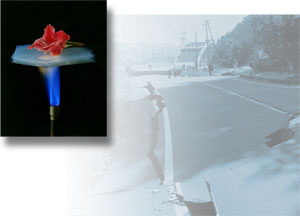ThemesThe Risk Profiles of "Green" Technologies and Practices

While there is well-founded interest in potential downsides of energy-efficient and renewable energy technologies, in the vast majority of the cases these technologies reduce everyday insurance risks while trimming greenhouse-gas emissions that will challenge insurers in the longer term.
Some of these dual benefits involve enhanced disaster resilience [PDF], while others involve other types of losses. Taken together, these technologies and practices comprise potent "no-regrets" responses to climate change.
Energy efficiency also manages financial risks [PDF] associated with energy price volatility, and offers financial benefits in many cases (e.g. in the business case for green buildings [PDF]).
We have also made the case that the proper deployment of energy-efficient and renewable technologies helps mitigate liability risks [PDF] associated with greenhouse-gas emissions.
Last but not least, many green technologies and practices reduce the greenhouse-gas that will cause increased insured catastrophe losses [PDF] in the future.
Database of Climate-Friendly Technologies
In 1998, LBNL assembled an inventory of technologies developed or supported within the US DOE national laboratory system. About 80 examples of technologies that reduce energy use and/or greenhouse-gas emissions, while providing insurance loss-prevention benefits were documented in "Energy-Efficiency and Renewable Energy Options For Risk Management and Insurance Loss Reduction: An Inventory of Technologies, Research Capabilities, and Research Facilities at the U.S. Department of Energy's National Laboratories." [Report PDF] [Appendices PDF] Many more similar technologies exist, although this database has not been updated since 1998.
Selected Examples [many more in the links above]
- Indoor air quality problems, premature equipment failure, construction defects liability, underperformance — Loss Prevention Strategy: Building commissioning and retrocommissioning
- Fires caused by torchire light fixtures — Loss Prevention Strategy: Replacement high-efficiency light fixtures [PDF]
- Fires caused by furnace flame roll-out; carbon monoxide deaths; ice dams — Loss Prevention Strategy: Sealing leaky ducts
- Waterborne diseases or contamination during natural disasters — Loss Prevention Strategy: Ultraviolet Water Disinfection
- Urban heat deaths — Loss Prevention Strategy: Improving buildings' thermal envelope
- Egress from buildings during emergencies — Loss Prevention Strategy: LED and CFL exit signs
- Workers compensation, business interruption, health problems from poor indoor air quality — Loss Prevention Strategy: Energy-efficient approaches to improved indoor environmental quality
